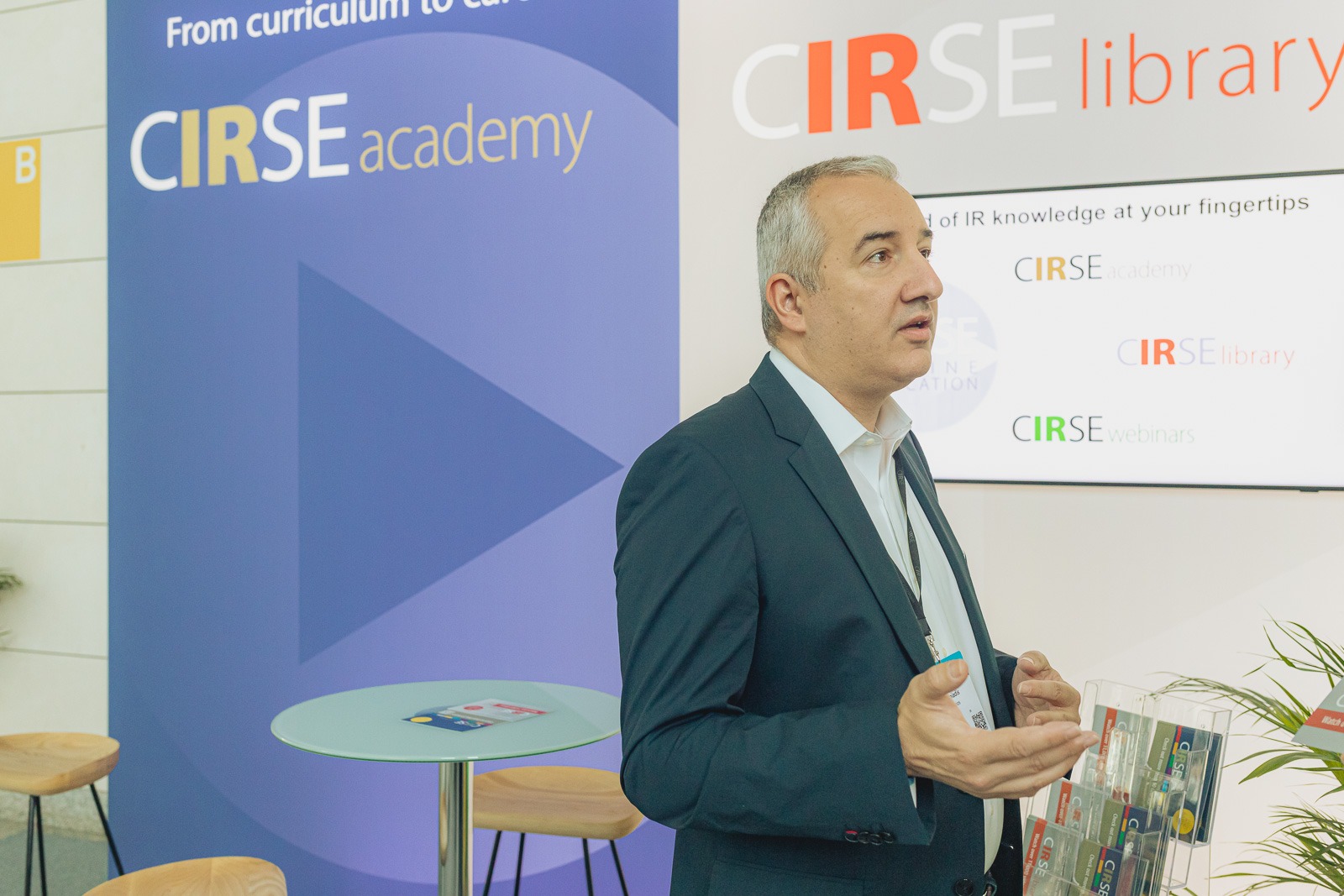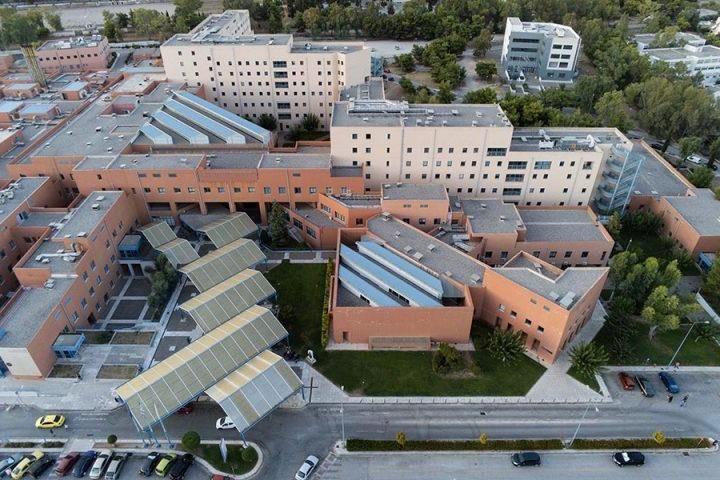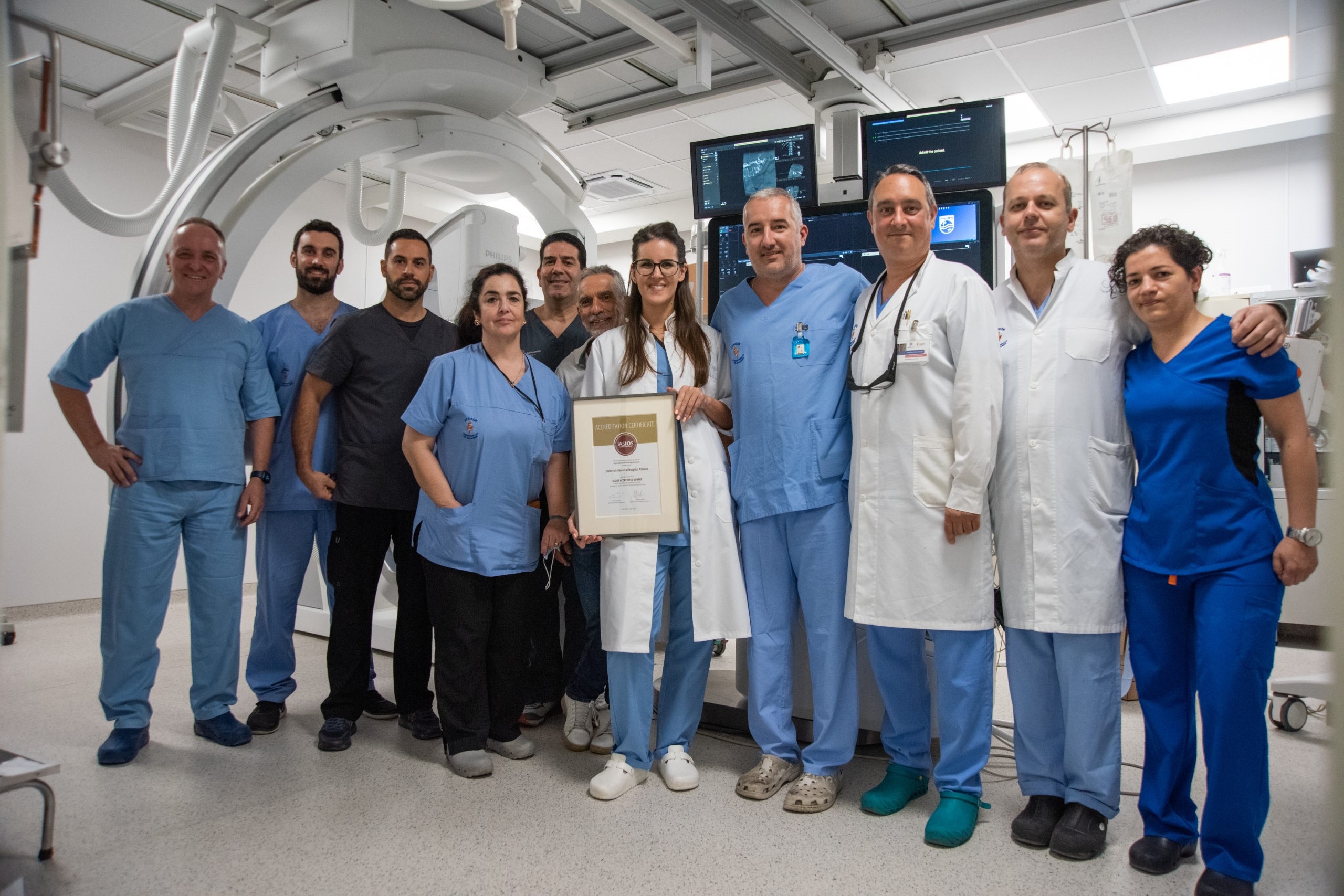ESIR 2024: Spine interventions
February 7, 2024
In this insightful interview, we delved into the evolving landscape of percutaneous interventions in the spine with Prof. Dimitrios Filippiadis, who is at the forefront of advancing spinal care. As the local host behind the upcoming comprehensive ESIR course on spine interventions, he shared his perspectives on the multidisciplinary approach, hands-on workshops, and the strategic division of the course into established indications and advanced sessions.
Interested parties can register for this course to explore the essential techniques, the impact of evolving technologies, and take advantage of the unique learning experience awaiting physicians wishing to enhance their expertise in spine percutaneous procedures.
CIRSE: How did your current practice motivate you to create an ESIR course specifically on spine interventions?
Filippiadis: Spine disorders encompass a wide array of pathologies which are commonly associated with pain, lost productivity, mobility, and impairments in quality of life. The longer these conditions remain untreated, the more profound of an effect they have on basic self-care activities as well as advanced and complex social interactions, work, and leisure. Percutaneous interventions in the spine constitute a field which continues to evolve rapidly. During the last decades, numerous changes and developments have been added to the therapeutic armamentarium of spine procedures. It is clear to me from my everyday practice that to optimize care for these patients, multidisciplinary collaboration is of utmost importance; it goes without saying that interventional radiologists play an invaluable and pivotal role by offering safe, efficacious, and minimally invasive imaging-guided procedures. The numbers of spine pathology cases (of both benign and malignant substrate) continuously increase; therefore, we need to ensure that we as interventional radiologists will continue to offer services that will reach the vast majority, ideally all, of this patient population.
CIRSE: Can you describe the evolving landscape of percutaneous interventions in the spine over the last decade and highlight some notable changes and developments? How have advancements in percutaneous interventions contributed to the therapeutic options available for various spine pathologies?
Filippiadis: Spine interventions include a variety of diagnostic and therapeutic techniques aiming to offer solutions in pathologies which usually cause pain, mobility problems, and life quality impairment. The landscape includes how, when, why, and for whom spine interventions are offered. To contextualize a discussion of an evolving landscape regarding these techniques, we need to emphasize the integration of all multiple patient care procedures. This list is endless, starting from biopsy, vertebral augmentation techniques, intervertebral disc therapies as well as injections and temperature-mediated neurolytic options for back pain. Just to give you a simple example, decades ago the first case of percutaneous vertebral augmentation was reported; a lot of things have fallen into place since then, and now, apart from vertebroplasty, a variety of alternative techniques is available, including balloon augmentation and spinal implants aiming to offer a patient-tailored or fracture-tailored approach. Personally speaking, what fascinates me the most is the impact of percutaneous ablation and the related advancements in the management of spine pathology, including the treatment of benign and malignant tumours as well as neurolytic therapies for back pain. Presently, we have ablation systems specifically designed for spine ablation, not to mention radiofrequency electrodes and cryoneurolysis probes targeting nerve structures.
CIRSE: What are the key techniques and skills essential for physicians engaging in percutaneous spine procedures? How do they address different spine pathologies?
Filippiadis: Consultation, physical examination, and imaging studies are of paramount importance for a correct diagnosis. Physicians engaged in spine procedures should be able to take medical and clinical records to perform all necessary clinical tests to identify the source of pain and correlate symptomatology to a diagnosis. Finally, knowledge of diagnostic imaging ensures identification and confirmation of the diagnosis. We should all remember, however, that we treat patients and not the images; treatment decisions should rely upon a combination of all the steps. Once a diagnosis has been reached, the selection of appropriate therapeutic techniques is the next step. Physicians engaged in spine procedures should be able to perform a wide variety of techniques and should have the critical judgment to select among a variety of therapies. Selection ideally should be performed on a scale-wise approach based on minimal invasiveness.
CIRSE: How do the hands-on workshops on spine models contribute to the learning experience of the delegates?
Filippiadis: Extensive hands-on workshops on spine models will provide delegates with the opportunity of performing these procedures in a safe environment, master the necessary technical skills, and learn tips and tricks for a safe and efficacious approach. The hands-on workshops on spine models will significantly contribute to the re-enforcement of the theoretical/didactics part of the course, rendering them more memorable and boosting learning retention rates. This instructional approach will allow delegates to learn by performing a technique. The plan is to shift participants from passive recipients to actively engaging participants. Operators/physicians will get direct practical experience and learn from their mistakes.
CIRSE: The course will be divided into two parts: established indications this year, and an advanced course next year. How does this structure enhance the learning experience for participants? In what specific ways will participants benefit from the April course, and how might attending both sessions contribute to a more comprehensive understanding and proficiency in spine percutaneous procedures?
Filippiadis: Percutaneous interventions in the spine include a wide variety of procedures (for example, infiltrations and neurolysis, biopsy, discography and disc decompression, ablation, and vertebral augmentation) which provide therapies for different spine pathologies. These include back pain and neuralgias, pathologic confirmation of infections and lesions of unknown origin, as well as intervertebral disc herniation, metastatic disease, and vertebral fractures. The need to create a two-year course divided into established indications this year and an advanced course next year was twofold, not only based upon the wide variety of indications and spine procedures, but also aiming to create a clinical practice continuum. Ideally, delegates will leave this year’s course ready to start building clinical practice in spine management aiming to perform injections, biopsies, vertebral augmentation, and disc treatments. Once establishing this practice, 12 months later they will have the opportunity to repeat and fill in any gaps as well as expand their knowledge on ablation and spine implants. In both courses, all kinds of imaging modalities will be used for guidance, aiming to offer alternatives which will fit in with everyone’s everyday work. Furthermore, navigation and robotic systems will be available for practical training to introduce everybody to advanced imaging guidance for spine procedures.
CIRSE: What are you most looking forward to?
Filippiadis: With the help of CIRSE we have gathered an excellent group of instructors who use a wide variety of imaging modalities for guidance in their everyday practice. It is a great opportunity to get a glimpse on how spine procedures are performed in different settings and share tips and tricks for safe and efficacious performance. The course’s surprises will include advanced navigation systems for spine procedures (this is a river we urgently need to cross, aiming to catch up with other specialties in the field which have already adopted them) and high-end radiation-free robotics with an extremely realistic haptic sensation (trust me, these systems are ideal for training). Having a personal interest in neurolysis, I just can’t wait to lay my hands upon the radiofrequency electrodes and cryoprobes (vendors have already booked their presence in Athens). Now that I’m thinking of it, maybe I should steal some time and participate in the training groups as well.
CIRSE: Why should IRs travel to Athens to attend the course? How does this course cater to IRs looking to develop or enhance their expertise in spine percutaneous procedures?
Filippiadis: This course is designed for physicians who are interested in developing or improving their knowledge as well as fine-tuning their practical skills on spine percutaneous procedures. Hopefully this course will add to clinical decision and critical thinking, steepening of the learning curve as well as to building self -confidence during treatment performance. Additionally, it will improve social skills, increase motivation and enjoyment in learning. Athens is a historic city renowned for its archaeological ruins, stunning landscapes, and mouth-watering cuisine making it the ideal place for organizing an ESIR course.
Meet Prof. Dimitrios Filippiadis and other leading experts at the Spine interventions: Established indications course in Athens, Greece, from April 11-12. Register by February 15 to secure the early bird rate!



